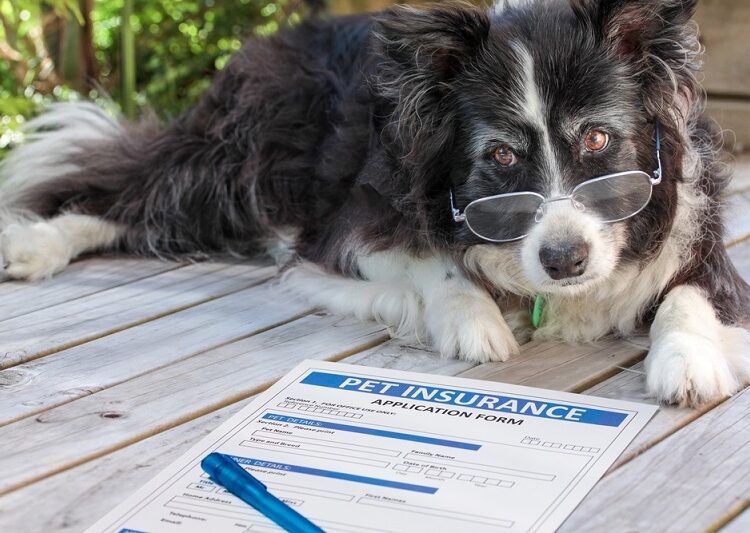The bond we share with our animal companions is profound. They are integral members of our families, and when they fall ill or suffer an injury, our primary concern is their rapid recovery and comfort. However, the rapidly escalating costs of veterinary care can present a significant financial burden, often forcing agonizing decisions during stressful times. This is where pet insurance steps in, promising to mitigate these financial shocks and ensure pets receive the best possible medical attention without owners facing crippling debt. But with a monthly premium and varying coverage options, a crucial question arises: Is pet insurance truly worth the investment?This comprehensive article will delve into the intricacies of pet insurance, exploring its purpose, different types of coverage, the factors influencing its cost, its myriad benefits, potential drawbacks, and ultimately, help you determine if it’s a wise financial decision for your unique situation and beloved pet. Understanding the nuances is key to making an informed choice that brings peace of mind and secures your pet’s future well-being.
The Rising Cost of Veterinary Care

Modern veterinary medicine has made incredible strides, offering treatments and diagnostics that were unimaginable even a decade ago. These advancements, while life-saving, often come with a substantial price tag.
A. Advanced Diagnostics: MRI, CT scans, ultrasounds, specialized blood tests, and genetic screenings are expensive.
B. Specialist Care: Veterinary specialists (e.g., cardiologists, oncologists, neurologists, dermatologists) command higher fees due to their advanced training and equipment.
C. Emergency and Critical Care: Overnight stays, intensive monitoring, and emergency surgeries can quickly accumulate costs in the thousands of dollars.
D. Technological Equipment: High-tech equipment, from digital radiography to laser surgery units, requires significant investment and maintenance.
E. Pharmaceuticals: Many pet medications, especially those for chronic conditions or specialized treatments, can be costly.
F. Inflation: General economic inflation also affects veterinary services, driving up prices for everything from supplies to labor.
These escalating costs mean that a sudden illness or accident, such as a broken bone, cancer diagnosis, or severe allergic reaction, can result in bills ranging from hundreds to tens of thousands of dollars. Without a financial safety net, many owners find themselves in difficult positions.
What Exactly Is Pet Insurance?
At its core, pet insurance is a healthcare policy for your animal, similar to health insurance for humans. You pay a regular premium, and in return, the insurer helps cover eligible veterinary expenses when your pet gets sick or injured. It’s important to understand that, unlike human health insurance, most pet insurance operates on a reimbursement model. This means you pay the vet directly, submit a claim, and then get reimbursed for a percentage of the eligible costs.
Key Components of a Pet Insurance Policy
Understanding these terms is vital when comparing policies.
A. Premium
This is the monthly or annual fee you pay to keep your pet’s policy active. Premiums vary based on factors like:
- Pet’s Breed: Some breeds are predisposed to certain genetic conditions, leading to higher premiums.
- Pet’s Age: Older pets generally have higher premiums due to increased health risks.
- Location: Veterinary costs vary by region, impacting premiums.
- Coverage Type and Level: More comprehensive plans or higher reimbursement percentages will have higher premiums.
- Deductible and Reimbursement Percentage: Your chosen deductible and reimbursement percentage also influence the premium.
B. Deductible
This is the amount you must pay out-of-pocket before your insurance coverage kicks in.
- Annual Deductible: You pay this amount once per policy year. Once met, the insurer starts reimbursing.
- Per-Condition Deductible: You pay this amount for each new condition your pet develops. This can mean meeting multiple deductibles in a year if your pet has several unrelated issues.Hack: Choosing a higher deductible often results in a lower monthly premium, but means more out-of-pocket expense before coverage starts.
C. Reimbursement Percentage (or Co-insurance)
This is the percentage of eligible vet bills that the insurance company will reimburse you after your deductible has been met. Common percentages are 70%, 80%, or 90%.
Example: If your bill is $1,000, your deductible is $250, and your reimbursement is 80%:
- Eligible amount after deductible = $1,000 – $250 = $750
- Reimbursement = 80% of $750 = $600
- Your out-of-pocket cost (total) = $250 (deductible) + $150 (20% of $750) = $400
D. Annual Limit
This is the maximum amount the insurance company will pay out in a policy year. Some policies offer unlimited annual benefits, while others cap it at a specific dollar amount (e.g., $5,000, $10,000, $20,000).
Hack: For major illnesses or accidents, costs can easily exceed lower annual limits, so consider policies with higher or unlimited caps.
E. Waiting Periods
This is the time period from when your policy becomes active until coverage for certain conditions begins.
- Accident Waiting Period: Usually short (e.g., 2-14 days).
- Illness Waiting Period: Typically longer (e.g., 14-30 days).
- Orthopedic/Cruciate Ligament Waiting Period: Often significantly longer (e.g., 6 months to 1 year) due to the high cost of these surgeries.
F. Exclusions
These are conditions or treatments that your policy will not cover. Common exclusions include:
- Pre-existing Conditions: Any illness or injury that occurred or showed symptoms before your policy started or during the waiting period. This is the most significant exclusion.
- Routine/Preventative Care: Unless you purchase an add-on wellness plan.
- Cosmetic Procedures: Tail docking, ear cropping, declawing.
- Breeding-Related Costs: Pregnancy, whelping.
- Experimental Treatments: Therapies not widely accepted in veterinary medicine.
- Certain Therapies: Some policies may exclude specific alternative therapies like acupuncture or chiropractic unless an add-on is purchased.
Types of Pet Insurance Coverage

Policies generally fall into a few main categories:
A. Accident-Only Plans
These are the most basic and affordable. They cover unexpected injuries like broken bones, lacerations, foreign body ingestion, or car accidents. They do not cover illnesses.
B. Accident & Illness Plans (Comprehensive)
This is the most common and recommended type of policy. It covers both accidents and illnesses, including:
- Accidents: As above.
- Illnesses: Infections, digestive issues, cancer, diabetes, arthritis, allergies, skin conditions, ear infections, etc.
- Emergency Vet Visits
- Hospitalization
- Surgery
- Diagnostic Tests (X-rays, blood work, ultrasound)
- Prescription Medications
- Specialist Visits
C. Wellness/Preventative Plans (Add-ons)
These are typically not standalone insurance but add-ons to an Accident & Illness plan. They cover routine care, such as:
- Annual Vet Exams
- Vaccinations
- Flea/Tick/Heartworm Prevention
- Deworming
- Spay/Neuter
- Dental CleaningsHack: Evaluate if the cost of the wellness plan add-on outweighs the out-of-pocket cost of these routine services. Sometimes, it’s more cost-effective to pay for these directly.
Why Pet Insurance Might Be Worth It
A. Financial Peace of Mind
This is the primary benefit. Knowing that you have a safety net for unexpected and costly veterinary emergencies or chronic illnesses can reduce immense financial stress. You can focus on your pet’s recovery, not the bill.
B. Access to Best Care Options
With financial constraints eased, you are empowered to choose the best and most advanced treatments available for your pet, rather than being limited by cost. This could mean opting for specialist care, advanced diagnostics, or life-saving surgeries.
C. Avoidance of “Economic Euthanasia”
Tragically, some owners are forced to make the heartbreaking decision to euthanize a pet due to an inability to afford treatment for a treatable condition. Pet insurance aims to prevent this agonizing scenario.
D. Budgeting for Pet Care
It transforms unpredictable, potentially huge vet bills into manageable, predictable monthly premiums. This allows you to budget more effectively for your pet’s overall care.
E. Coverage for Chronic Conditions
Once a chronic condition (like diabetes, arthritis, or allergies) is covered, ongoing treatments, medications, and specialized food (if medically necessary and covered by policy terms) are often reimbursed for the life of the pet, making long-term management more affordable.
F. Ideal for Younger Pets
Getting insurance when your pet is young and healthy is often the best strategy. Premiums are lower, and you avoid issues with pre-existing conditions as your pet ages.
Why Pet Insurance Might Not Be For Everyone
A. Cost of Premiums
Monthly premiums can add up, especially for older pets, larger breeds, or those in high-cost areas. Over a pet’s lifetime, you might pay more in premiums than you receive in claims if your pet remains exceptionally healthy.
B. Pre-existing Condition Exclusions
This is the biggest hurdle. If your pet has already been diagnosed with a condition, it will almost certainly not be covered by a new policy. This means older pets or those with existing health issues get less benefit from new coverage.
C. Reimbursement Model
You still have to pay the vet bill upfront. For very expensive treatments, this can mean paying thousands of dollars out-of-pocket before receiving reimbursement, which could take weeks. This requires owners to have sufficient liquid funds available.
D. Deductibles and Annual Limits
You will always pay at least your deductible, and if costs exceed your annual limit, you’ll be responsible for the rest.
E. Waiting Periods
You can’t get coverage for an immediate need. If you buy a policy today, and your pet gets hit by a car tomorrow, the accident might be covered (after a short waiting period). But if they develop a chronic illness, you’ll likely have to wait a month or more before coverage applies.
F. Complex Policy Language and Exclusions
Reading and understanding policy terms can be challenging. Some policies have many specific exclusions, and what’s considered “routine” versus “illness” can vary.
G. Not All Vets Take Insurance Directly
Most pet insurance works on a reimbursement model, meaning you don’t need to find a “network” vet. However, this means the vet doesn’t handle the insurance paperwork directly (beyond providing records for you), and you still pay them upfront.
Is It Worth It For YOUR Pet? A Decision Framework
Deciding if pet insurance is worth it depends on several individual factors.
A. Your Financial Situation and Risk Tolerance
- Do you have an emergency fund? If you have a readily accessible emergency fund of $5,000 – $10,000 specifically for pet emergencies, you might decide to self-insure.
- How risk-averse are you? If the thought of a $5,000 vet bill gives you nightmares, insurance offers peace of mind. If you’re comfortable taking the financial risk, you might prefer to save.
B. Your Pet’s Breed and Age
- Breed Predispositions: Certain breeds (e.g., German Shepherds for hip dysplasia, Golden Retrievers for cancer, Bulldogs for respiratory issues) have higher risks for expensive conditions. Insurance is often a stronger consideration for these breeds.
- Age: Enroll pets when they are young and healthy to secure lower premiums and avoid pre-existing conditions. As pets age, premiums rise significantly, and they are more likely to have existing conditions that won’t be covered.
C. Your Lifestyle and Pet’s Activity Level
- Active Pets: Highly active dogs who enjoy rough play or outdoor adventures might be at higher risk for accidents (ligament tears, fractures).
- Outdoor Pets: Pets with more outdoor exposure might face higher risks of accidents or certain illnesses.
D. Your Philosophy on Pet Care
Are you the type of owner who will spare no expense for life-saving treatment, regardless of the cost? If so, insurance might be crucial. If you have a limit to what you’d spend, you might calculate if insurance fits within that.
How to Choose the Right Pet Insurance Policy
If you decide pet insurance is for you, here’s how to navigate the options:
A. Get Multiple Quotes
Compare policies from at least 3-5 different providers. Each company has different strengths, pricing structures, and policy terms.
B. Read the Fine Print (Exclusions!)
Understand what is NOT covered. Pay close attention to pre-existing condition definitions, waiting periods, and any specific exclusions for your pet’s breed or known conditions.
C. Check Reimbursement Type (Per-Incident vs. Annual Deductible)
An annual deductible is generally preferred as you only pay it once a year regardless of how many new conditions arise.
D. Consider the Annual Limit
Choose a limit that aligns with potential catastrophic costs (e.g., cancer treatment, major surgery). Unlimited plans offer the most comprehensive protection.
E. Review Customer Service and Claims Process
Look for companies with good reviews regarding their claims process, speed of reimbursement, and customer support.
F. Ask Your Veterinarian
Your vet team often has experience with various insurance providers and can offer insights into which ones are generally reliable and easy to work with.
Conclusion
The question of whether pet insurance is worth it has no single answer. It’s a highly personal financial decision deeply intertwined with your pet’s unique needs, your financial preparedness, and your level of comfort with risk. For many, the peace of mind it offers, knowing that a significant portion of unexpected, high-cost veterinary bills will be covered, is invaluable. It empowers owners to prioritize their pet’s health without the agonizing choice between treatment and financial ruin.
While it’s true you might pay more in premiums over a lifetime than you claim, insurance is fundamentally about protecting against catastrophic, unpredictable expenses. Just like car or home insurance, you hope you never need it, but you’re profoundly grateful when you do. By carefully evaluating your situation, understanding policy components, and comparing providers, you can make an informed decision that ensures your beloved companion receives the care they deserve, no matter what challenges lie ahead.







